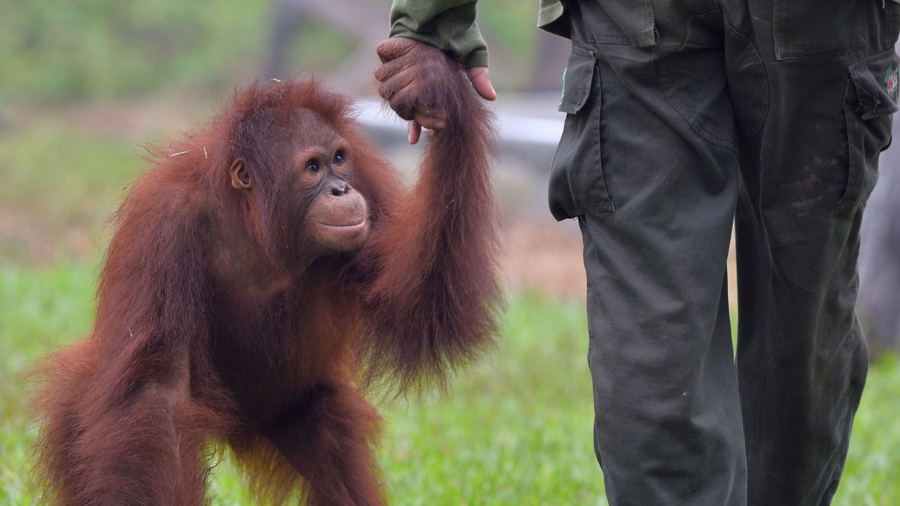This happy orangutan is back where he should be, thanks to a long rehabilitation program that’s being practiced by Borneo Orangutan Survival Foundation.
He and two other males are now ready to live independently in the forest.
It’s all part of a concerted program by the charity to preserve the orangutans of Kalimantan.
Earlier this year in May, another four previously captive orangutans were released.
According to the foundation’s project manager, Denny Kurniawan, this is one of many releases they’ve performed:
“We have succeeded in rehabilitating confiscated orangutans who are kept by the community, we rehabilitated them and finally we were able to release them back to their habitat, the number of 500 orangutans (which have been released) is phenomenal for us because 500 is not a small number for a rehabilitation center to be able to release orangutans,” says Kurniawan.
Since 2012, the charity has created 379 release locations, where orangutans can be safe in central Kalimantan, and another 121 in east Kalimantan.
The BOS Foundation is thought to be the largest orangutan rehabilitation center in the world, with two centers in the Provinces of east Kalimantan and central Kalimantan.
Currently, there are more than 400 orangutans still in rehabilitation to be released back into their habitat.
Kurniawan says it takes a long process of at least eight years to rehabilitate orangutans with strict procedures until they are ready.
“We will continue to rehabilitate the remaining 400 orangutans (in cages) and hope that in the future they will be able to become release candidates, although it is possible that there will be orangutans that we cannot release,” he says.
Rehabilitating and releasing orangutans back into the wild requires a lot of time, hard work, and money.
Many of the challenges faced include educating the public, so they no longer keep orangutans as pets.
Natural forests are the best place to release orangutans back into the wild.
The three locations that have been used as release sites so far have begun to be inadequate.
So, the BOS Foundation, in collaboration with the government through the Ministry of Forestry, is continuously trying to find new locations to release the remaining orangutans.
Kurniawan says the BOS Foundation will continue to fight so the target of zero orangutans in cages might one day be realized.
Kurniawan, who has been doing the job for almost a decade, says he has grown close to some orangutans in rehabilitation centers over the years, their release, when it comes, is always emotional.
A mixture of loss, sadness, but also great happiness, he says.
“What we have done so far has allowed them to return to the forest and that makes us feel relieved, happy … I don’t have the right words to express my feelings,” says Kurniawan.


